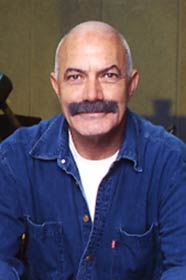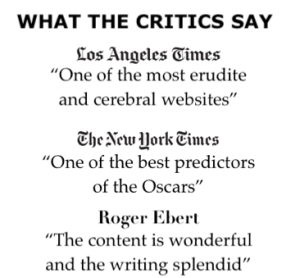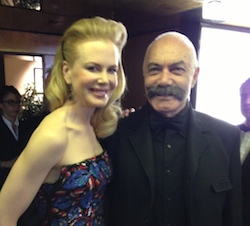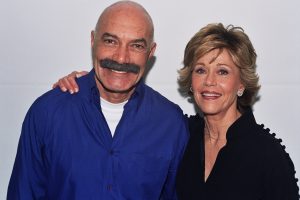Aug 12, 2025
One reason why Hitchcock’s thrillers have succeed is because of the intricacies of his characters and the actors who brought them to life.
Hitchcock’s films have often explored deeper themes and serious social commentary, which went beyond offering thrills and frills, such as the rise of fascism, or the failings of the criminal justice system.
Hitchcock knew that horror movies are less scary, and dramas are less intriguing when the characters are bland or vague.
He had cast some legendary actors, who helped him to achieve his vision of complex, character-driven narratives.
Cary Grant, Gregory Peck, Ingrid Bergman, Grace Kelly and James Stewart have all worked with Hitchcock on multiple occasions.
Hitchcock had never won the Best Director Oscar, despite his five nominations, but his status as one of the greatest directors in history is indisputable.
Spellbound (1945)
Starring Gregory Peck and Ingrid Bergman
Foreign Correspondent (1940)
Starring Joel McCrea and Laraine Day
World War II movies made during the war are interesting from a historical perspective, but many of them merely served as propaganda.
This is not the case with Foreign Correspondent, a tightly scripted thriller about a journalist who uncovers an Axis conspiracy involving spies from different countries.
The dark thriller shows Hitchcock’s flair with action sequences, especially during a thrilling car chase in Amsterdam and the plane crash in the finale, as the cabin quickly fills up with water.
But these impressive moments never overshadow the intriguing story of international espionage.
Lifeboat (1944)
Starring Tallulah Bankhead, William Bendix
In this detailed character drama, the lengthy fight for survival highlights the dark, hidden depths of the passengers, as they are driven to desperation.
Notorious (1946)
Starring Cary Grant and Ingrid Bergman
Cary Grant and Ingrid Bergman team up to infiltrate a gang of Nazis in Brazil after the Second World War, but this spy thriller is far more dangerous than its romance suggests. Many spy movies feature some kind of love interest, but the relationship in Notorious feels more natural, and the circumstances surrounding it are consequently far more threatening. Hitchcock produces some of his most ambitious and impressive set pieces in Notorious, and he utilizes long takes in particular to ground his scenes in reality. The camera often sweeps over vast scenes, but nothing can distract from Grant and Bergman’s electric chemistry.
The Lady Vanishes (1938)
Starring Margaret Lockwood, Michael Redgrave
After an elderly woman disappears on a train, her young traveling companion helps to investigate what happened to her. The Lady Vanishes is an acutely observed examination of human nature, with
Each passenger on the train hinders the investigation in some way, often for selfish reasons, unrelated to the crime.
The characters represent different nations and political affiliations before the Second World War.
The entire incident may be seen as an allegory for Europe’s passive response to the rise of fascism.
However, even while removed from its particular historical context, The Lady Vanishes remains an intriguing, highly entertaining mystery.
Shadow Of a Doubt (1943)
Starring Teresa Wright and Joseph Cotten
Shadow of a Doubt is Hitchcock’s personal favorite from his extensive filmography.
It presents a dark, malicious side to American suburbia, and it blows notion of the happy nuclear family, which turns out to be a myth.
Young Charlie suspects her beloved uncle, also called Chalie, of horrific crimes. Her investigation causes him to turn his murderous gaze on her.
Shadow of a Doubt reflects the commonly held fear that evil can come from anywhere, even the safety of one’s own home and the love of one’s own family.
The Man Who Knew Too Much (1956)
Starring James Stewart and Doris Day
Hitchcock was dissatisfied with his first attempt, so the second version makes changes to the plot and the characters, but what makes it a superior movie is its excellent dialogue, which is both humorous and tense.
To Catch A Thief (1955)
Starring Cary Grant and Grace Kelly
Frenzy (1972)
Starring Jon Finch, Alec McCowen
Dial M For Murder (1954)
Starring Grace Kelly, Ray Miland, Robert Cummings
Dial M for Murder is one of Kelly’s best roles, as a woman whose husband plots to kill her. The plan goes awry, and the husband soon pivots to framing her for the murder of the assassin.
It’s a straightforward thriller, but Hitchcock manages to inject it with tension.
Take the scene in which Kelly walks around her apartment, oblivious to the fact that a murderer is waiting behind a curtain.
The plot shows in minute details the unfolding of the murder investigation, which would have become tedious in the hands of a lesser director.
The Birds (1963)
Starring Tippi Hedren, Rod Taylor, Jessica Tandy, Suzanne Pleshette
Hitchcock’s natural horror reflects man’s fear of the wilderness, it’s also a prescient ecological fable.
There are plenty of horror movies with animals acting as monsters, but few are as gripping as The Birds.
The birds in the film aren’t just senseless and pervasive evil, they also represent nature in revolt, rebelling against the selfishness of humanity’s pollution and industrialization.
This warning has grown more relevant in recent years, especially the chilling ending.
Strangers On a Train (1951)
Starring Farley Granger, Robert Walker
Hitchcock proved to be the perfect director for Patricia Highsmith’s crime thriller Strangers on a Train, about two men who conspire to commit murders on one another’s behalf, so that they can never get caught.
The plot features a classic tale of a good man tempted into evil deeds.
Robert Walker is disturbing as the charismatic sociopath, luring his opposite man into a nefarious plot. The distinct ways in which Hitchcock frames the two men morph slowly, suggesting that there is ill-defined line between good and evil, and that even morally upstanding person might need the right circumstances to succumb to their unsavory desires.
Rope (1948)
Starring James Stewart and John Dall
A masterfully deliberate movie that it seems almost absurd. The film generates more dramatic tension in a single location, in less than 90 minutes, than most movies without such restraints.
Rope marked Hitchcock’s first collaboration with James Stewart, who would become one of his most consistent leading men.
Hitchcock uses long takes to devastating effect, drawing the audience into the macabre dinner party hosted by two young and bright murderers.
With modern filmmaking technology, he would have been able to complete the movie in a single shot, like a stage play.
Rebecca (1940)
Starring Laurence Olivier and Joan Fontaine
Based on the novel by Daphne du Maurier, Rebecca tells the story of a cynical widower who struggles to banish the shadow of his former wife. Laurence Olivier and Joan Fontaine are both excellent.
Judith Anderson’s Mrs. Danvers is one of Hitchcock’s most nefarious antagonists. It’s an intimate psychological drama dealing with a complex tangle of human emotions.
Hitchcock’s first American film was an immediate hit, nominated for 11 Academy Awards, and winning the Best Picture.
The 39 Steps (1935)
Hitchcock’s best British movie, before moving to Hollywood, follows a tense game of international espionage. The 39 Steps is considered Hitchcock’s first true masterpiece, and many of his iconic markers are present. There is a man falsely accused of committing a crime, a shocking third act, and porcelain-faced blonde woman. The character of Pamela was one of Hitchcock’s own creations. John Buchan’s classic spy novel has been adapted many times for both stage and screen, but Hitchcock made the material his own, adding touches which make his version stand out from the pack.
North By Northwest (1959)
Starring Cary Grant, Eva Marie Saint and James Mason
Three years before the James Bond franchise took off, Hitchcock made a classic spy thriller, about an advertising executive caught up in a ludicrous case of mistaken identity.
North by Northwest is Hitchcock at his most playful.
Some of the dialogue between Cary Grant and Eva Marie Saint is witty and erudite. The outlandish action sequences are funny in a different way, but North by Northwest never neglects its duty to thrilling, twisty intrigue.
Relentlessly entertaining, bouncing from one brilliant set piece to the next.
It’s the perfect film for Hitchcock newcomers.
Vertigo (1958)
Starring James Stewart and Kim Novak
Rear Window (1954)
Starring James Stewart and Grace Kelly
Hitchcock asks uncomfortable questions about the human desire to watch and consume.
Hitchcock’s tale of obsession and voyeurism is meticulously detailed, in the choreographed actions of the characters, and also in the constructed sets. The protagonist Jeff is in a wheelchair, he is only able to watch events unfold outside his window. In this way, Hitchcock draws parallels between him and the viewer.
When the killer spots Jeff and stares down the lens of the camera, beyond the protagonist and into the audience, it’s a shot thar shatters the comfort of the viewing experience.










